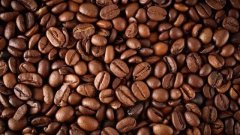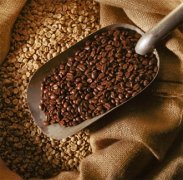Raw bean treatment of coffee washed with water, semi-washed, insolated and honey

The first is dry treatment (secado), also known as natural all-day exposure (natural). After the coffee fruit is actually picked, it is dried directly in the sun. According to the weather conditions, it is generally necessary to dry the coffee beans for 2 weeks to reduce the water content of the coffee beans to 10%, 12%, and then use a machine to remove the dried peel and pulp. Raw bean processing plants (beneficio) usually retain the parchment shell (parchment; pergamino) on the outside of coffee beans when they are stored and are not removed until they are exported (Costa Rican law stipulates that raw coffee beans cannot be exported with parchment shells). This kind of treatment generally requires sufficient sunshine in the place of origin.
The second kind: wet treatment (lavado), also known as water washing fermentation. After the coffee fruit is transported to the coffee processing plant, the peel and flesh of the coffee are removed together with the peeling machine (despulpadora). The coffee beans are still wrapped in a parchment shell, while the parchment shell is covered with a layer of sticky and sweet pectin. The coffee beans with pectin are placed in a cement-piled fermentation tank, and the fermentation time is judged according to the specific conditions (factors such as whether the pool is filled with water, whether the water is clean, etc.). There is a dispute about this point, ranging from as little as 12 hours to as long as 36-48 hours). The fermented pectin no longer sticks tightly to the parchment shell and then rinses off with running water. Finally, the raw bean with shell is dried by either solarization or machine (secadora, guardiola) so that the water content of raw bean is reduced to 10% Murray 12%, and then stored with shell. This method of treatment does not have very high requirements for sunshine.
The third kind: semi-washing (semi-lavado), and some people call it honey treatment (honey, miel), which is actually a combination of tanning and water-washing fermentation to treat raw beans. First remove the peel and pulp of coffee, and then, according to the need, decide whether to use a pectin removal machine (desmucilaginador) to remove pectin, or how much pectin to remove, and finally reduce the water content of raw beans to 10% or 12% by sun drying or machine drying or a combination of both.
One step: retain 100% pectin, and then reduce the water content of raw beans to 10% 12% by either solarization or machine drying or a combination of both.
Another step: according to different needs, adjust the setting of the pectin removal machine so that the parchment shell retains different proportions of pectin, and then reduce the water content of raw beans to 10% Mel 12% by either solarization or machine drying or a combination of both.
Raw beans treated by water washing and fermentation generally have less silver skin attached, but unripe beans retain most of the silver skin. Natural all-day sun and honey-treated raw beans, depending on the amount of pectin retained (more or less honey), more or less silver skin will stick to the coffee beans, and show different shades of orange.
When choosing honey to deal with the defects of raw beans, you need to scrape off the silver skin to observe the color of the coffee beans themselves. Honey treatment of raw beans in baking should also pay attention to, if a large number of silver skin can not be discharged in time, the high temperature will scald the surface of coffee beans, resulting in inconsistent baking color.
In general, raw beans dried in the sun are bluer and greener and more uniform than those dried by machines. The water content of raw beans can not be judged simply according to the color depth. The best water content of raw beans is 9% Murray 12%. The water content of raw beans must be well controlled in storage. Once the water content exceeds 13%, raw beans are easy to breed toxins.
Important Notice :
前街咖啡 FrontStreet Coffee has moved to new addredd:
FrontStreet Coffee Address: 315,Donghua East Road,GuangZhou
Tel:020 38364473
- Prev

The picking of coffee beans coffee beans are the seeds of coffee trees.
Coffee beans are the seeds of coffee trees. After three or four years of growth, the coffee tree matures and begins to bear fruit, with one fruit arranged in clusters or clusters along the branches. The outside of the seed is a layer of peel, which can be picked as soon as it turns red. Under the red skin (exocarp) there is a layer of pulp (mesocarp), which is a small thin layer, and then a layer of material endocarp like parchment. In
- Next

The roasting Tips of Espresso Coffee beans: a knowledge of mixed beans
Talking about mixed beans when we talk about baking espresso beans, we are actually talking about the science of mixed beans. The highest sweet spots of all kinds of coffee beans from different countries appear at different baking points, so bakers must find a balance between baking and mixing beans in order to make a good espresso. First of all, this subject should be based on the degree of baking and the selection of beans.
Related
- Guji coffee producing area of Guji, Ethiopia: Humbela, Shakiso, Wulaga
- What is the most expensive variety of Qiloso in BOP multi-variety group?
- How to store the coffee beans bought home?
- Why are Yemeni coffee beans so rare now?
- Ethiopian Sidamo all Red Fruit Sun Sun Santa Vini Coffee beans
- SOE is mostly sour? What does it mean? Is it a single bean? what's the difference between it and Italian blending?
- Is Italian coffee beans suitable for making hand-brewed coffee?
- How to choose coffee beans when making cold coffee? What kind of coffee beans are suitable for making cold coffee?
- Just entered the pit to make coffee, what kind of coffee beans should be chosen?
- Can only Japan buy real Blue Mountain Coffee? What are authentic Jamaican Blue Mountain coffee beans?

